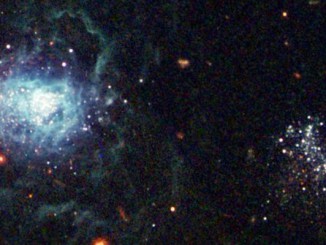
dwarf galaxy

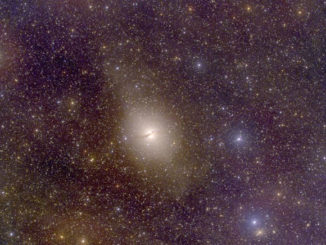

Hubble views starbirth in an irregular galaxy
This NASA/ESA Hubble Space Telescope image captures the glow of distant stars within NGC 5264, a dwarf galaxy located just over 15 million light-years away in the constellation of Hydra (The Sea Serpent). NGC 5264 clearly possesses an irregular shape — unlike the more common spiral or elliptical galaxies — with knots of blue star formation.
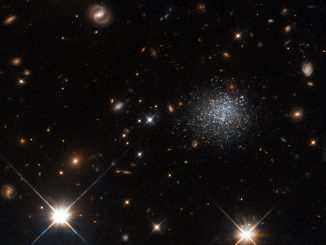
Hubble views a stubborn dwarf galaxy
The fuzzy collection of stars seen in this NASA/ESA Hubble Space Telescope image forms an intriguing dwarf galaxy named LEDA 677373, located about 14 million light-years away from us in the constellation Centaurus. This particular dwarf galaxy contains a plentiful reservoir of gas from which it could form stars, but it stubbornly refuses to do so. Why?

Hubble sees a glittering sphere of stars in the Small Magellanic Cloud
This NASA/ESA Hubble Space Telescope image reveals the simple beauty of NGC 339, a 6.5-billion-year-old massive intermediate age star cluster that lies in the SMC, a dwarf galaxy some 200,000 light-years away from us. The relationship between such clusters and true globular clusters is not yet fully understood.
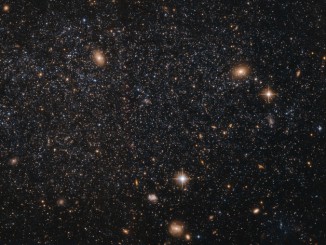
Hubble sees distant spirals through a diffuse dwarf galaxy
At first glance this NASA/ESA Hubble Space Telescope image seems to show an array of different cosmic objects, but the speckling of stars shown here actually forms a single body — a nearby dwarf galaxy known as Leo A. Its few million stars are so sparsely distributed that some distant background galaxies are visible through it.
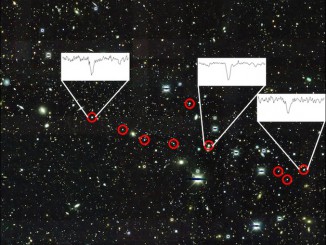
Ancient dwarf galaxy preserves record of catastrophic event
The lightest few chemical elements formed minutes after the Big Bang. Most heavier elements in the periodic table are created by stars, either from internal nuclear fusion or in catastrophic explosions. New observations of a dwarf galaxy discovered last year show that the heaviest elements, such as gold and lead, are likely left over from rare collisions between two neutron stars.

Dwarf galaxy found in deadly gravitational embrace of Sculptor spiral
A dwarf galaxy discovered close to the famous Sculptor Galaxy (NGC 253) by Australian astrophotographer Michael Sidonio has been studied in detail by the 8-metre Subaru Telescope in Hawaii. This fruitful collaboration between amateur and professional astronomers has revealed that the dwarf galaxy, now known as NGC 253-dw2, is being disrupted by the nearby giant spiral.
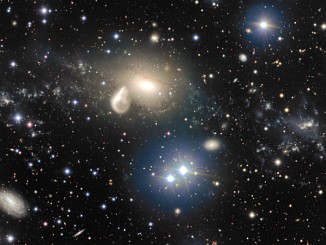
VLT studies mysterious dwarf galaxy born in cosmic collision
The spectacular aftermath of a 360 million year old cosmic collision is revealed in great detail in new images from ESO’s Very Large Telescope. Among the debris is a rare and mysterious young dwarf galaxy. This galaxy is providing astronomers with an excellent opportunity to learn more about similar galaxies that are expected to be common in the early universe, but are normally too faint and distant to be observed by current telescopes.
